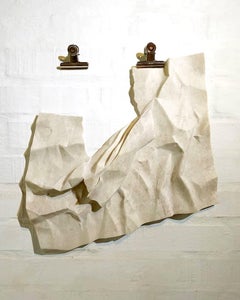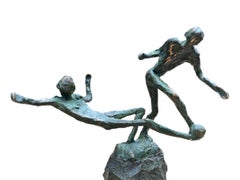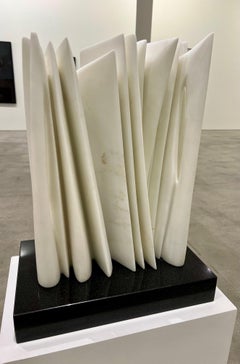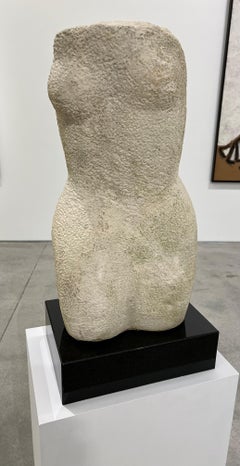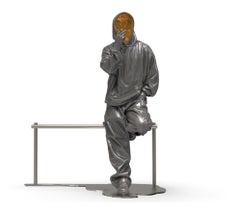Art by Medium: Stone
2010s Contemporary Art by Medium: Stone
Marble
21st Century and Contemporary Contemporary Art by Medium: Stone
Stone, Bronze
2010s Abstract Geometric Art by Medium: Stone
Marble
2010s Abstract Geometric Art by Medium: Stone
Marble
1950s Contemporary Art by Medium: Stone
Stone
21st Century and Contemporary Contemporary Art by Medium: Stone
Concrete
2010s Contemporary Art by Medium: Stone
Sandstone
2010s Gothic Art by Medium: Stone
Marble, Steel
20th Century Art Deco Art by Medium: Stone
Cast Stone
2010s Contemporary Art by Medium: Stone
Marble, Bronze
2010s Contemporary Art by Medium: Stone
Stone, Granite
2010s Contemporary Art by Medium: Stone
Stone, Granite
2010s Contemporary Art by Medium: Stone
Granite, Stainless Steel
2010s Contemporary Art by Medium: Stone
Granite, Stainless Steel
2010s Contemporary Art by Medium: Stone
Granite, Stainless Steel
1980s Other Art Style Art by Medium: Stone
Stone
2010s Abstract Art by Medium: Stone
Stone, Marble, Steel, Metal, Stainless Steel
2010s Contemporary Art by Medium: Stone
Marble
2010s Contemporary Art by Medium: Stone
Marble
2010s Contemporary Art by Medium: Stone
Marble
2010s Contemporary Art by Medium: Stone
Marble
2010s Contemporary Art by Medium: Stone
Marble, Gold Leaf
2010s Contemporary Art by Medium: Stone
Marble, Gold Leaf
2010s Contemporary Art by Medium: Stone
Marble, Gold Leaf
2010s Contemporary Art by Medium: Stone
Marble, Gold Leaf
2010s Contemporary Art by Medium: Stone
Marble, Gold Leaf
2010s Contemporary Art by Medium: Stone
Marble, Gold Leaf
2010s Contemporary Art by Medium: Stone
Marble, Gold Leaf
2010s Contemporary Art by Medium: Stone
Marble, Gold Leaf
2010s Contemporary Art by Medium: Stone
Marble, Gold Leaf
21st Century and Contemporary Contemporary Art by Medium: Stone
Marble, Gold Leaf
2010s Contemporary Art by Medium: Stone
Marble, Gold Leaf
2010s Contemporary Art by Medium: Stone
Marble, Gold Leaf
2010s Contemporary Art by Medium: Stone
Marble, Gold Leaf
2010s Contemporary Art by Medium: Stone
Marble, Gold Leaf
2010s Contemporary Art by Medium: Stone
Marble, Gold Leaf
2010s Contemporary Art by Medium: Stone
Marble, Gold Leaf
2010s Contemporary Art by Medium: Stone
Marble, Gold Leaf
2010s Contemporary Art by Medium: Stone
Marble, Gold Leaf
2010s Contemporary Art by Medium: Stone
Marble, Gold Leaf
2010s Contemporary Art by Medium: Stone
Marble, Gold Leaf
2010s Contemporary Art by Medium: Stone
Marble, Gold Leaf
2010s Constructivist Art by Medium: Stone
Marble
1970s Abstract Art by Medium: Stone
Stone
1970s Abstract Art by Medium: Stone
Stone
1930s Surrealist Art by Medium: Stone
Granite
1970s Art by Medium: Stone
Cast Stone
1980s Abstract Art by Medium: Stone
Granite
2010s Contemporary Art by Medium: Stone
Cast Stone, Limestone, Bluestone
2010s Contemporary Art by Medium: Stone
Cast Stone, Limestone, Bluestone
2010s Art by Medium: Stone
Cast Stone, Limestone, Bluestone
2010s Abstract Art by Medium: Stone
Limestone
15th Century and Earlier Art by Medium: Stone
Limestone
2010s Contemporary Art by Medium: Stone
Stone
21st Century and Contemporary Contemporary Art by Medium: Stone
Bluestone, Bronze
2010s Contemporary Art by Medium: Stone
Marble
2010s Contemporary Art by Medium: Stone
Stone, Marble
21st Century and Contemporary Abstract Art by Medium: Stone
Stone, Granite, Metal, Steel
1980s Post-Modern Art by Medium: Stone
Granite, Bronze
2010s Contemporary Art by Medium: Stone
Concrete, Steel, Iron
